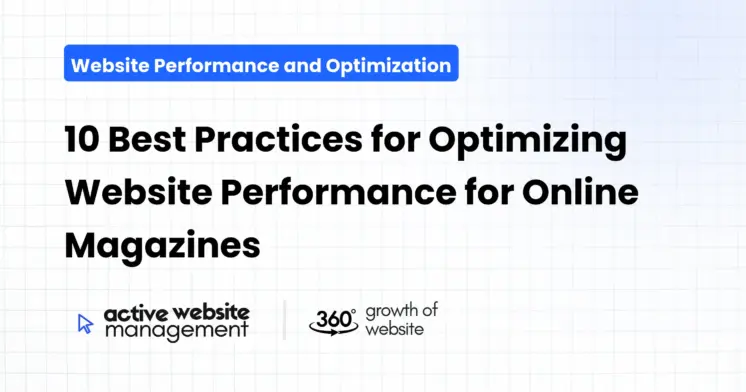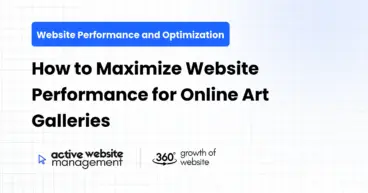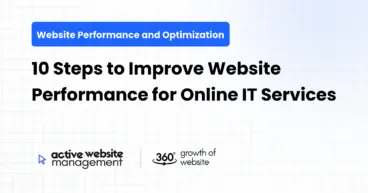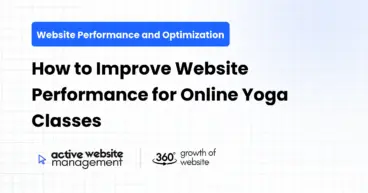February 2, 2025
18 min read
The digital realm is a battleground for attention. For online magazines, carving out a space and capturing readers’ eyeballs isn’t just about compelling content – it’s about lightning-fast loading times and a seamless user experience. A slow website can be a death knell, sending readers scurrying back to Google and into the waiting arms of your competitors. In this article, we’ll unpack ten crucial best practices to turbocharge your online magazine’s performance, ensuring your readers stick around and, crucially, keep coming back for more.
Why Hosting Matters: Your Website’s Foundation
Think of your website hosting as the foundation of your house. A flimsy, poorly constructed foundation can lead to cracks, leaks, and ultimately, a collapse. Similarly, inadequate hosting can lead to slow loading times, frequent crashes, and frustrated users. Choosing the right hosting is not just a technical detail; it’s a fundamental step in ensuring your online magazine thrives.
Choosing the Right Hosting: Types and Considerations
- Shared Hosting: Like living in an apartment building, you share server resources with other websites. This is the most affordable option, but performance can be inconsistent, especially during peak traffic periods. Not ideal for high-traffic media websites.
- VPS (Virtual Private Server) Hosting: This offers a middle ground, providing more dedicated resources and control than shared hosting. It’s like having your own townhouse – you share the building, but you have more individual space and privacy. Better for medium-sized publications.
- Dedicated Hosting: Like having your own detached house, you have a server all to yourself, providing the highest level of performance and customization. This is the best option for large online magazines with significant traffic, as it allows for optimal speed and stability.
- Cloud Hosting: Utilizes a network of servers, distributing the load for optimal performance and scalability. This is often a flexible and reliable choice, particularly beneficial for publications with unpredictable traffic surges.
Don’t Just Maintain Your Website—
Grow It using Active Website Management! Don't Wait for Growth—Accelerate It with Active Website Management
Essential Hosting Features for Magazine Sites
- Sufficient Bandwidth: The amount of data your website can transfer within a given time. Online magazines, with their images and videos, require ample bandwidth.
- Adequate Storage: Space for all your website files, including text, images, videos, and other multimedia elements.
- Server Uptime Guarantee: Look for a provider offering 99.9% uptime or better. Downtime means lost readers and a damaged reputation.
- Fast Server Response Time: This measures how quickly your server responds to user requests. A low response time is critical for quick loading times.
- Scalability: The ability to easily increase server resources as your traffic grows.
- CDN (Content Delivery Network): A network of geographically distributed servers that deliver your content from the server closest to the user, significantly improving loading times, especially for international audiences.
Actionable Step
Research and compare hosting providers carefully, paying attention to these key features. Don’t be afraid to invest in a higher-tier plan if your magazine demands it. Remember, your hosting is the backbone of your performance. Consider cloud hosting providers like AWS, Google Cloud or specialized managed hosting providers optimized for WordPress.
2. Optimize Images for Speed and Visual Appeal
The Image Problem: Heavy Files, Slow Loading
Images are the lifeblood of online magazines, but they are also often the biggest culprits behind slow loading times. Large, unoptimized image files can significantly drag down your website’s performance.
- Choose the Right File Format:
- JPEG: Best for photographs and complex images, offering a good balance between quality and file size.
- PNG: Ideal for graphics, logos, and images with transparency, but can result in larger file sizes.
- WebP: A modern image format developed by Google that provides superior compression and quality compared to JPEG and PNG.
- Compress Images: Reduce file sizes without compromising visual quality. Tools like TinyPNG, ImageOptim, and Adobe Photoshop offer effective compression options.
- Resize Images: Avoid using overly large images and relying on HTML or CSS to scale them down. Resize images to the exact dimensions they will appear on your website.
- Lazy Loading: Load images only when they come into the user’s viewport. This dramatically reduces initial page load time, especially on content-heavy pages. Implement lazy loading using browser attributes or JavaScript libraries.
- ImageOptim: A free macOS application for optimizing image files.
- TinyPNG/TinyJPG: Online tools for compressing PNG and JPG files.
- ShortPixel: A WordPress plugin for automated image optimization.
- Smush: Another popular WordPress plugin for image compression and optimization.
- Cloudinary: A cloud-based image management platform that offers powerful image optimization and delivery features.
Actionable Step
Before uploading any image to your online magazine, run it through an image optimization tool. Make it a habit and a part of your content creation workflow. Implement lazy loading across your website to further enhance loading speed. Test with tools like Google PageSpeed Insights to verify improvements.
3. Minify CSS, JavaScript, and HTML
Why Minification Matters: Reducing File Sizes
Think of your website’s code like a cluttered room. There’s a lot of unnecessary whitespace, comments, and other elements that don’t contribute to the room’s functionality but take up space. Minification is like tidying up that room by removing all the unnecessary elements from your code. This leads to smaller file sizes, which translates to faster loading times.
Don't Wait for Growth—Accelerate It with
Active Website Management Don't Wait for Growth—Accelerate It with Active Website Management
The Minification Process
Minification involves removing unnecessary characters from CSS, JavaScript, and HTML files without affecting their functionality. This includes:
- Removing whitespace (spaces, tabs, new lines)
- Removing comments
- Shortening variable and function names
Benefits of Minification
- Reduced File Sizes: Smaller files mean faster loading times, as less data needs to be transferred from the server to the user’s browser.
- Improved Website Performance: Faster loading times enhance the overall user experience, leading to lower bounce rates and increased engagement.
- Better SEO: Google prioritizes fast-loading websites in search rankings. Minifying your code contributes to better SEO performance.
- Online Minifiers: Websites like CSSMinifier, JavaScript Minifier, and HTML Minifier allow you to paste your code and generate minified versions.
- Build Tools: For larger projects, build tools like Webpack, Gulp, and Grunt automate the minification process during development.
- WordPress Plugins: Plugins like Autoptimize, WP Rocket, and Fast Velocity Minify automatically minify CSS, JavaScript, and HTML for WordPress websites.
- CDNs: Some CDNs offer built-in minification capabilities, further optimizing file delivery.
Actionable Step
Integrate minification into your development workflow, whether through online tools, build processes, or plugins. Regularly check your website’s code and use an online performance test to check the impact of your changes. Remember to test your website thoroughly after minification to ensure that no functionality is broken.
4. Leverage Browser Caching
How Browser Caching Works: Saving Time and Data
Browser caching is a process where browsers store static website assets, such as images, CSS files, and JavaScript files, locally on the user’s device. When the user revisits your website or navigates to another page, the browser can load these assets from the local cache instead of requesting them again from the server.
Benefits of Browser Caching
- Reduced Load Times: Subsequent page loads are much faster, as the browser retrieves most assets from the local cache.
- Reduced Server Load: Less strain on your server because the browser isn’t requesting the same files repeatedly.
- Lower Bandwidth Consumption: Less data needs to be transferred, saving bandwidth for both the user and your server.
- Improved User Experience: Faster page loads enhance user satisfaction and encourage repeat visits.
Implementing Browser Caching
- Setting Cache Headers: Configure your server to send appropriate cache control headers (e.g.,
Cache-Control, Expires) to instruct the browser on how long to store cached assets. - .htaccess Configuration: On Apache servers, you can configure caching using the .htaccess file.
- Nginx Configuration: Similar configuration can be applied on Nginx servers.
- WordPress Plugins: Plugins like W3 Total Cache and WP Rocket provide user-friendly options for configuring browser caching.
Configuring Cache Expiry
You can set different cache expiry times for different types of files:
- Static Files (CSS, JavaScript, Images): Can be cached for longer durations, often weeks or months, as these files usually don’t change frequently.
- Dynamic Content (HTML): May need shorter cache durations or need to be revalidated to reflect updates.
Actionable Step
Implement browser caching on your server and utilize a CDN. Choose an expiry time appropriate for your content, balancing the need for speed with the need to serve updated content. Use a tool like webpagetest.org to analyze your website and identify caching issues.
5. Optimize Your Database
The Database’s Role: Storing Your Content
Your database is where all your website’s content, settings, and user information is stored. Over time, databases can accumulate a lot of unnecessary data, such as revisions, trashed posts, and spam comments. This can lead to slow query times and sluggish website performance.
Optimizing Your Database: Best Practices
- Clean Up Unnecessary Data:
- Delete post revisions: Limit the number of post revisions stored in the database.
- Remove trashed posts and pages: Permanently delete items in the trash.
- Delete spam comments: Regularly remove spam comments from your database.
- Remove unused themes and plugins: Remove deactivated themes and plugins to keep your database tidy.
- Optimize Tables: MySQL optimizes tables with commands such as
OPTIMIZE TABLE. - Regular Backups: Always backup your database before making major changes.
- Database Indexing: Ensure that the database is properly indexed for faster data retrieval. Indexes work like the index in the back of a book, making it easier for your database to find what it’s looking for.
- Query Optimization: Analyze your database queries and optimize them for speed. Avoid using complex queries when simpler ones will do.
- phpMyAdmin: A popular database management tool for managing MySQL databases.
- WP-Optimize: A WordPress plugin that helps clean, optimize, and manage your database.
- Advanced Database Cleaner: Another robust plugin for WordPress database optimization.
Actionable Step
Make database optimization a regular maintenance task. Choose a tool or plugin that fits your technical skills and usage. Make sure that you have a good backup strategy. Regularly monitor database performance to identify potential issues and maintain website speed.
6. Minimize HTTP Requests
What are HTTP Requests? Loading the Elements of Your Page
Every time a user visits a page on your website, their browser sends HTTP requests to the server for the different files that make up the page. These files include HTML, CSS, JavaScript, images, and fonts. Each request takes time, and the more requests a page has, the longer it takes to load.
Minimizing HTTP Requests: Strategies
- Combine CSS and JavaScript Files: Instead of having multiple CSS and JavaScript files, combine them into fewer files. This reduces the number of requests the browser has to make.
- CSS Sprites: Combine multiple small images into a single image and use CSS to display the desired parts. This reduces the number of image requests.
- Inline Critical CSS: Embed the CSS required to render the above-the-fold content directly into the HTML file. This allows the browser to start rendering the page faster.
- Use a CDN: Distribute your website’s assets across a Content Delivery Network (CDN). This reduces the distance between the user and your server, speeding up file downloads.
- Lazy Load Images and Videos: Load images and videos only when they are within the user’s viewport. This prevents unnecessary requests for elements below the fold.
- Avoid Excessive Plugins: Be mindful of the number of plugins you install, particularly with content management systems like WordPress. Each plugin may introduce extra HTTP requests that can slow down your site.
- WebPageTest: Analyze the number of HTTP requests your website is making.
- Google Chrome DevTools: Check the network tab to see all the HTTP requests made by the browser.
- CSS and JavaScript Minifiers: These tools help to compress your code and reduce the number of files.
- WordPress Plugins: Plugins like Autoptimize and WP Rocket combine and minify CSS and JS files.
Actionable Step
Analyze your website’s HTTP requests using a tool like WebPageTest. Look for opportunities to combine files, use CSS sprites, or implement lazy loading. Regularly monitor your website’s HTTP requests to ensure optimal performance.
7. Use a Content Delivery Network (CDN)
The Geographic Challenge: Server Location and User Speed
When a user visits your website, their browser communicates with your server to download all the necessary files. The further away your server is from the user, the longer it takes for data to travel and for the website to load. A Content Delivery Network (CDN) solves this problem by caching your website’s assets on a network of servers distributed around the world.
How CDNs Work: A Network of Servers
A CDN works by placing copies of your website’s static assets (images, CSS, JavaScript) on servers located in different geographic locations. When a user visits your website, they download these assets from the server nearest to them, dramatically reducing loading times.
Benefits of Using a CDN
- Faster Loading Times: Users get content faster, regardless of their location.
- Reduced Server Load: Distributing load among multiple servers.
- Improved Scalability: Handling traffic spikes easily.
- Enhanced Reliability: Ensures your content is available even if one server is down.
- Better User Experience: Faster page loads lead to higher engagement and lower bounce rates.
Types of CDNs
- Free CDNs: Some free options are available, but might have limited features or traffic limitations.
- Paid CDNs: Offer more features, reliable service, and customer support. Popular options include Cloudflare, Amazon CloudFront, and Akamai.
Integrating a CDN
- DNS Configuration: Update your domain’s DNS records to point to the CDN.
- CDN Settings: Configure which assets to cache on the CDN.
- Website Integration: Update your website to use CDN URLs for your assets.
Actionable Step
Research and choose a CDN that fits your needs and budget. Integrate the CDN into your website setup and configure it to cache your assets effectively. Continuously monitor your CDN performance using metrics and tools.
8. Optimize for Mobile Devices
The Mobile-First World: A Large Portion of Your Audience
In today’s digital landscape, a significant portion of your online magazine’s traffic will come from mobile devices. Ignoring mobile optimization is a recipe for a poor user experience, high bounce rates, and lost readership.
Mobile Optimization Strategies
- Responsive Design: Ensure that your website layout adapts seamlessly to different screen sizes, from smartphones to tablets to desktops.
- Mobile-Friendly Content: Present content in a way that’s easy to read and navigate on small screens, such as concise text paragraphs and easy-to-tap buttons and links.
- Fast Mobile Page Load Times: Optimize all the previously mentioned best practices (image optimization, minification, caching) specifically with mobile users in mind.
- Touch-Friendly Navigation: Ensure that navigation menus and buttons are easy to interact with using touch gestures.
- Avoid Flash Content: Flash is not mobile-friendly and can cause issues on mobile devices.
- Prioritize Core Web Vitals: Pay special attention to Core Web Vitals (Largest Contentful Paint, First Input Delay, and Cumulative Layout Shift) for a better user experience.
- Google’s Mobile-Friendly Test: Analyze your website for mobile-friendliness.
- Google PageSpeed Insights: Evaluate your website’s performance on both desktop and mobile devices.
- Responsive Design Testing Tools: Check how your website looks on different screen sizes and devices.
- Browser Developer Tools: Simulate mobile devices within your browser to test responsiveness and performance.
Actionable Step
Prioritize mobile-friendliness as a core aspect of your website design and maintenance process. Run regular mobile-friendliness tests and make the necessary adjustments. Keep testing your site performance and mobile responsiveness to make sure your site works on every device.
9. Implement Caching at Multiple Levels
The Power of Layers: Speeding Up Delivery
Caching isn’t a single strategy; it’s a multi-layered approach that can dramatically enhance your online magazine’s performance. Implementing caching at multiple levels ensures that content is delivered as quickly as possible to your readers.
Levels of Caching
- Browser Caching: As discussed earlier, stores static assets on the user’s browser.
- Server-Side Caching: Stores generated HTML pages or database query results on the server. This reduces the need to generate the page every time a user requests it.
- CDN Caching: Caches content on servers distributed around the world for faster delivery.
- Object Caching: Stores commonly accessed database results in memory for faster access.
- Page Caching: Caches the fully rendered HTML pages to reduce the server load for repeat views.
Types of Server-Side Caching
- Full Page Caching: Caches the entire HTML output of a page for faster subsequent loads.
- Object Caching: Stores frequently used data in memory to reduce database queries.
- Fragment Caching: Caches sections or components of a page.
Caching Techniques
- WordPress Plugins: Plugins like W3 Total Cache, WP Rocket, and LiteSpeed Cache offer comprehensive caching solutions.
- Server-Level Configuration: Configure server-side caching through web server software or specific caching software like Varnish.
- Memcached/Redis: Implement object caching using in-memory data storage systems.
Benefits of Multi-Layered Caching
- Reduced Server Load: Fewer requests reach the origin server.
- Faster Loading Times: Content is delivered more quickly due to the cache.
- Improved Scalability: Handles more traffic without performance issues.
Actionable Step
Implement caching at multiple levels appropriate to your technical setup. Configure caching settings appropriately based on the types of content on your website and your publishing schedule. Monitor the performance of the implemented caching system regularly and make adjustments if needed.
The Ongoing Quest: Continuous Improvement
Website performance optimization is not a one-time task; it’s an ongoing process that requires regular monitoring and testing. As your online magazine grows, new content is added, and traffic patterns change, your website’s performance can fluctuate. Consistent monitoring ensures you identify and address issues proactively.
- Google PageSpeed Insights: Analyze your website’s performance and get suggestions for improvement.
- WebPageTest: Provides detailed performance analysis with waterfall charts and metrics.
- GTmetrix: Another powerful performance analysis tool offering detailed reports and insights.
- Pingdom: Tracks website uptime and performance, offering valuable historical data.
- Google Analytics: Monitors user behavior, bounce rates, and time spent on pages to identify user experience issues.
- Page Load Time: How long it takes for a page to fully load.
- Time to First Byte (TTFB): The time it takes for your server to respond to a request.
- Largest Contentful Paint (LCP): The time it takes for the largest visual element to render.
- First Input Delay (FID): Measures responsiveness to the user’s first interaction.
- Cumulative Layout Shift (CLS): Measures visual stability and prevents elements from shifting unexpectedly.
- Bounce Rate: The percentage of users who leave your website after viewing only one page.
- Page Views: The number of pages viewed on your website.
- Session Duration: How long users spend on your site.
Continuous Improvement Strategies
- Regular Audits: Conduct periodic performance audits using the tools mentioned above.
- Track Trends: Look for patterns in performance metrics to identify potential issues.
- Implement Optimization Changes: Based on performance data, make necessary adjustments to your website setup.
- Test and Monitor: Continuously test the impact of changes and monitor metrics.
- Stay Updated: Keep up-to-date with new technologies and best practices.
Actionable Step
Implement a monitoring system for your website, focusing on the important metrics discussed. Establish a routine for regular performance audits and implement optimization changes based on the data. By making performance improvement an integral part of your site maintenance, you’ll be sure to keep your audience engaged.
Active Website Management: A Partner in Your Success
For online magazines looking to not only optimize but also maintain peak performance, Active Website Management offers comprehensive solutions. Our experienced team specializes in providing ongoing support, maintenance, and optimization services tailored to the needs of online publications. We handle the technical complexities so you can focus on creating high-quality content and engaging your audience. From performance audits and optimization implementation to regular maintenance and monitoring, we are your partner in ensuring your online magazine remains fast, efficient, and user-friendly. Contact us today to see how we can help your website excel!
Optimizing website performance for online magazines is paramount for success. It’s not simply a technical chore but a crucial investment in reader engagement and overall growth. By implementing the ten best practices outlined in this article – from robust hosting and image optimization to browser caching, database upkeep, and ongoing monitoring – you can create a high-performing, user-friendly digital platform. Remember that this is an ongoing journey, not a one-time fix. By staying proactive and consistently working towards improvement, your online magazine will not only keep readers engaged but attract new ones, ensuring a thriving digital presence. Remember the internet is vast, and for a magazine to survive, it needs to be both amazing, fast, and always accessible. These tips are designed to help you achieve this.







